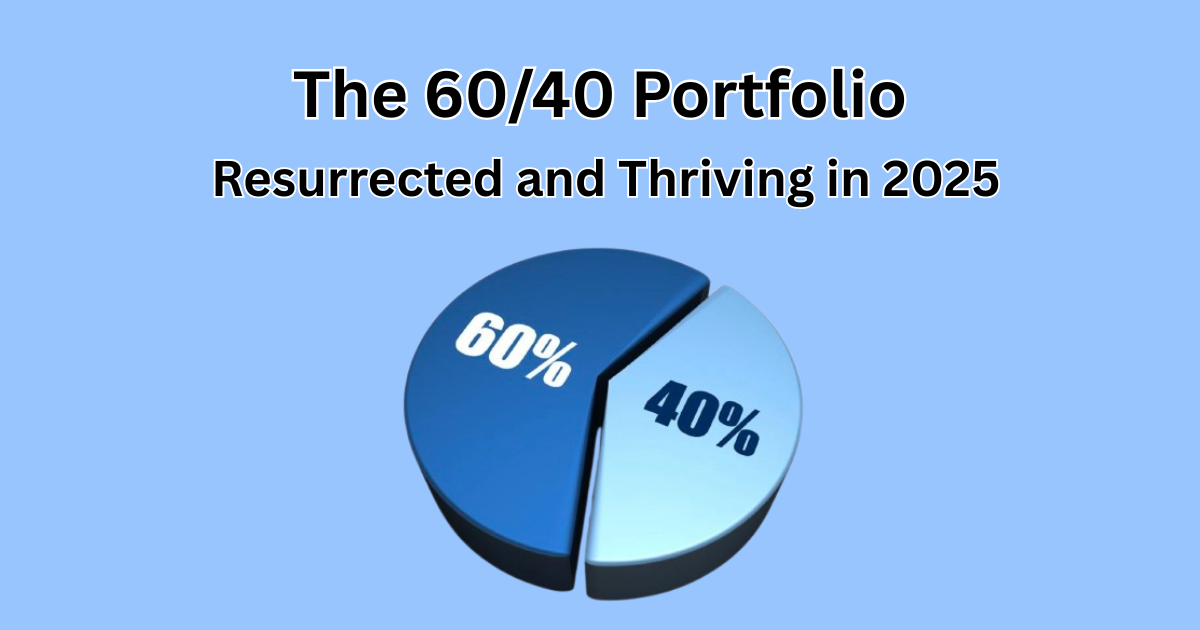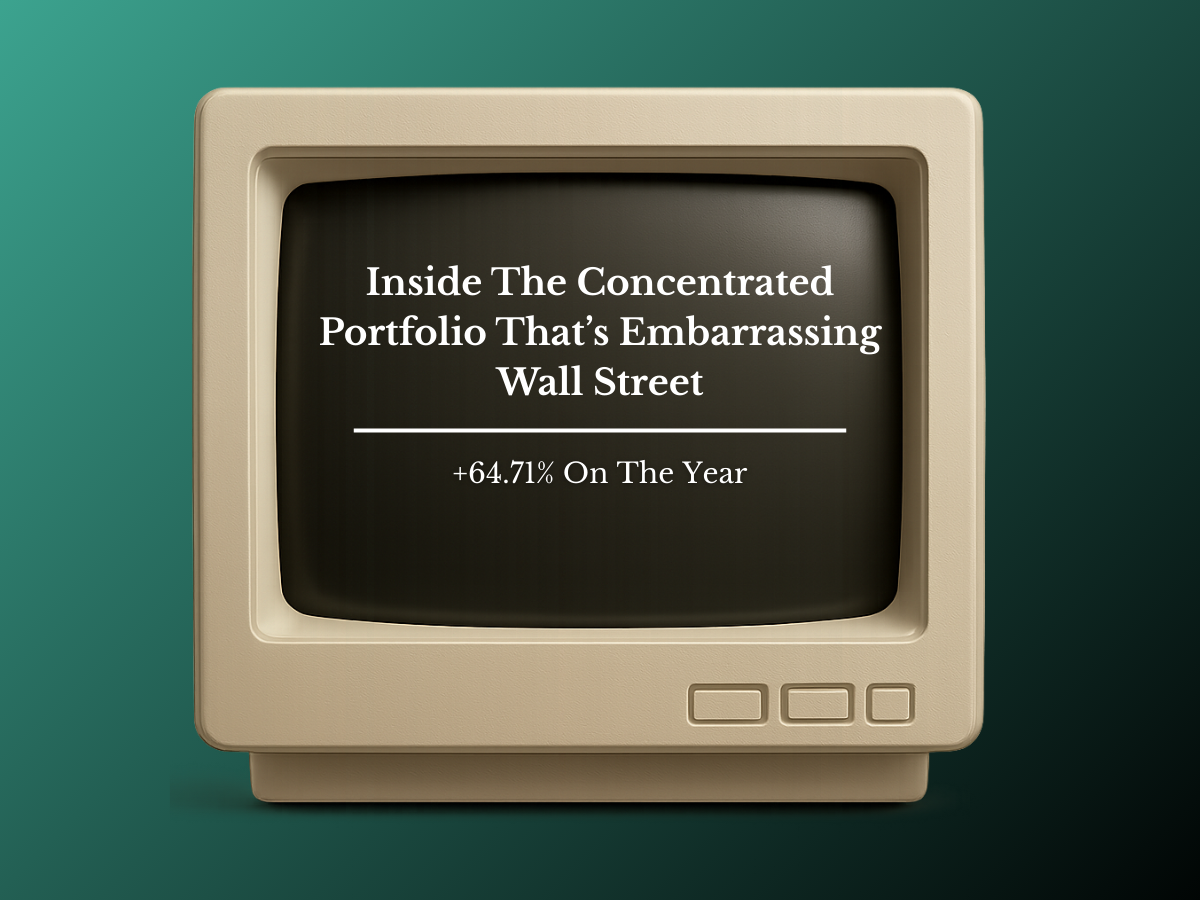
News you’re not getting—until now
Join 4M+ professionals who start their day with Morning Brew—the free newsletter that makes business news quick, clear, and actually enjoyable.
Each morning, it breaks down the biggest stories in business, tech, and finance with a touch of wit to keep things smart and interesting.

Welcome to The Profit Zone 👋
Where thousands of millionaires, CEO’s and high-performing entrepreneurs read the #1 financial newsletter on the web.


👉 Moody’s: Downgrades to the U.S. Credit Rating 📉
👉 The Math of Dollar-Cost Averaging: Why Consistency is Your Investing Superpower 🦸
👉 Take Your Portfolio to New Heights: Earn More Income From Stocks You Already Own Using Simple But Effective Strategies 📈


“If you have more than 120 or 130 I.Q. points, you can afford to give the rest away. You don’t need extraordinary intelligence to succeed as an investor.”


Moody’s Downgrade 🚨

The US lost its last perfect credit rating as Moody's downgraded it from 'AAA' to 'Aa1', citing concerns over rising government debt and interest costs.
The downgrade follows warnings made in 2023 and earlier downgrades by Fitch in 2023 and S&P in 2011.
Moody's notes that US debt has risen significantly compared to other top-rated countries, projecting federal debt to reach 134% of GDP by 2035, up from 98% last year.
Despite the downgrade, Moody's says the US retains strong economic attributes, including the dollar's role as the global reserve currency.
The White House criticized Moody's, claiming a focus on fixing fiscal issues.
The US economy shrank in the first 3 months of the year as government spending fell and imports surged as a result of firms racing to get goods into the country ahead of tariffs.


The Math of Dollar-Cost Averaging: Why Consistency is Your Investing Superpower
Let’s talk about dollar-cost averaging (DCA), the investing strategy that’s like the chill friend who always shows up but ends up stealing the show.
DCA is a simple strategy: you invest a fixed amount of money at regular intervals, no matter if the market’s throwing a party or throwing a tantrum. Make sense so far?
We’ll get into the math behind it.
But all you need to know right now is that it’s a game-changer that reduces risk, smooths out market volatility, and sets you up for long-term wins.
Buckle up for a deep dive into why consistency is your investing superpower, with real-world examples to prove it.
The Math: How DCA Works Its Magic
Picture this: you’re investing $200 a month in a stock.
In January, the stock’s at $20 per share, so you snag 10 shares, total investment of $200.
Then February rolls in, and the price falls to $10, so you invest another $200 and buy 20 shares.
By March, it’s back to $20, and you grab another 10 shares, another $200 invested in the market.
Over 3 months, you’ve spent $600 and own 40 shares, with an average cost of $15 per share.
Now, compare that to dumping $600 in January at $20 per share, which would’ve bought you only 30 shares.
Why does DCA’ing work so well?
Because you’re buying more shares when prices are low and fewer when they’re high, lowering your average cost per share.
If the stock climbs to lets say $25, your 40 shares are now worth $1,000, a much better deal than the $750 you would have had with a lump-sum buy.
This isn’t just theory. It’s an effective investing strategy.
A 2022 study from Charles Schwab found that in volatile markets especially, a DCA strategy often outperforms lump-sum investing because it avoids the gut-punch of buying at a peak.
By spreading your investment over time, you’re less likely to get burned by a sudden market drop.
It’s almost like sipping a hot latte slowly instead of chugging it and burning your tongue off.
Real-World Wins: DCA in Action
Meet Sarah, a graphic designer who started DCA-ing $100 a month into an S&P 500 index fund in 2015.
Through the 2020 COVID market crash and the wild swings of 2022, she kept at it. Week by week, without fault.
By 2023, her $9,600 total investment had grown to over $14,000, averaging an 8% annual return. Why?
Her consistent buys during dips meant she scooped up more shares at discount prices, boosting her gains when the market eventually recovered.
Contrast that with Mike, Sarah’s coworker, who tried his hardest to time the market.
He’d wait for “the perfect moment” to invest, often missing rallies and buying high.
By 2023, his sporadic $9,600 lump-sum investments were worth just $11,500.
Why Consistency Wins
DCA works because it’s rooted in math, not emotion.
Markets are like rollercoasters, they go up and down but DCA keeps you strapped in for the ride.
By investing regularly, you’re not sweating every dip or FOMO-ing every peak.
You’re just stacking shares. Lowering your average cost. Then letting time do the heavy lifting. As it should.
Let’s look at an example to really drive this home. We’re going to be looking at the difference between trying to time the market with lump sum investing, DCAing, chasing hype and the guy who’s scared to invest.
Meet our five investors, each with $2,000 to invest annually from 2003 to 2022, but wildly different strategies for tackling the S&P 500.
A - Peter Perfect, the market-timing wizard, had an uncanny knack (or insane luck) for pinpointing the market’s lowest closing point each year. In 2003, Peter held his $2,000 until March 11, the S&P 500’s yearly low, and invested at the perfect moment. In 2004, he waited again, dropping his next $2,000 on August 12, that year’s rock-bottom close. Peter kept up this flawless timing every year through 2022, always buying at the absolute dip. Not a bad job by Mr Perfect!
B - Matthew Monthly embraced the DCA strategy, splitting his $2,000 into twelve $166.67 chunks and investing one at the start of each month.
C - Rosie Rotten, bless her poor soul… she had the worst timing imaginable. She dumped her $2,000 into the market at each year’s peak. In 2003, she invested on December 31, the S&P 500’s highest close. In 2004, she waited until December 30, that year’s top, and kept up this unfortunate habit of buying at the worst possible moment through to 2022.
D - Larry Linger parked his $2,000 in cash (Treasury bills or a HYSA) every year, convinced the market would drop further. Spoiler: he never invested in stocks, always waiting for a “better” opportunity that never came. Tragic.
Here are the results:
The benefits of DCA? You don’t need a fat bank account to start.
Whether it’s $25 or $250 a month, there are tons of platforms that make it easy to set up automatic investments.
Keep building your empires 👑




Did you enjoy this newsletter?


Picture this…
It’s a cozy night, you’re sipping tea and your laptop is glowing with your stock portfolio.
You’ve got good stocks, but you feel they could do more.
What if you could unlock extra income from them?
That’s what happened to me and I’m excited to share my story with you.
I was eager to grow my wealth but stuck on how.
Good investors keep learning, so when I found a course promising to boost my portfolio, I was curious. Could it really take my investments to new heights?
I dove in, and it was a revelation.
The course taught me advanced strategies: options trading, risk management, and steady cashflow. And these made my stocks work harder.
Others agree:
“Worth every penny!” one said. “this course is unbelievable” said another.
Hundreds have transformed their portfolios, learning from a pro who’s used these exact methods.
It’s not wizardry, but it’s close. This course changed how I invest, and it can for you too.
Grab it now at a 50% discount before the price rises!
(Note: My link may earn me a commission at no extra cost to you)


Disclaimer: The publisher does not guarantee the accuracy or completeness of the information provided in this page. All statements and expressions herein are the sole opinion of the author or paid advertiser.
Dividend Domination Inc. is a publisher of financial information, not an investment advisor. We do not provide personalized or individualized investment advice or information that is tailored to the needs of any particular recipient.
THE INFORMATION CONTAINED ON THIS WEBSITE IS NOT AND SHOULD NOT BE CONSTRUED AS INVESTMENT ADVICE, AND DOES NOT PURPORT TO BE AND DOES NOT EXPRESS ANY OPINION AS TO THE PRICE AT WHICH THE SECURITIES OF ANY COMPANY MAY TRADE AT ANY TIME. THE INFORMATION AND OPINIONS PROVIDED HEREIN SHOULD NOT BE TAKEN AS SPECIFIC ADVICE ON THE MERITS OF ANY INVESTMENT DECISION. INVESTORS SHOULD MAKE THEIR OWN INVESTIGATION AND DECISIONS REGARDING THE PROSPECTS OF ANY COMPANY DISCUSSED HEREIN BASED ON SUCH INVESTORS’ OWN REVIEW OF PUBLICLY AVAILABLE INFORMATION AND SHOULD NOT RELY ON THE INFORMATION CONTAINED HEREIN.
Any projections, market outlooks or estimates herein are forward-looking statements and are inherently unreliable. They are based upon certain assumptions and should not be construed to be indicative of the actual events that will occur. Other events that were not taken into account may occur and may significantly affect the returns or performance of the securities discussed herein. The information provided herein is based on matters as they exist as of the date of preparation and not as of any future date, and the publisher undertakes no obligation to correct, update or revise the information in this document or to otherwise provide any additional material.
The publisher, its affiliates, and clients of the publisher or its affiliates may currently have long or short positions in the securities of the companies mentioned herein or may have such a position in the future (and therefore may profit from fluctuations in the trading price of the securities). To the extent such persons do have such positions, there is no guarantee that such persons will maintain such positions.
Neither the publisher nor any of its affiliates accept any liability whatsoever for any direct or consequential loss howsoever arising, directly or indirectly, from any use of the information contained herein.
By using the Site or any affiliated social media account, you are indicating your consent and agreement to this disclaimer and our terms of use. Unauthorized reproduction of this newsletter or its contents by photocopy, facsimile or any other means is illegal and punishable by law.





